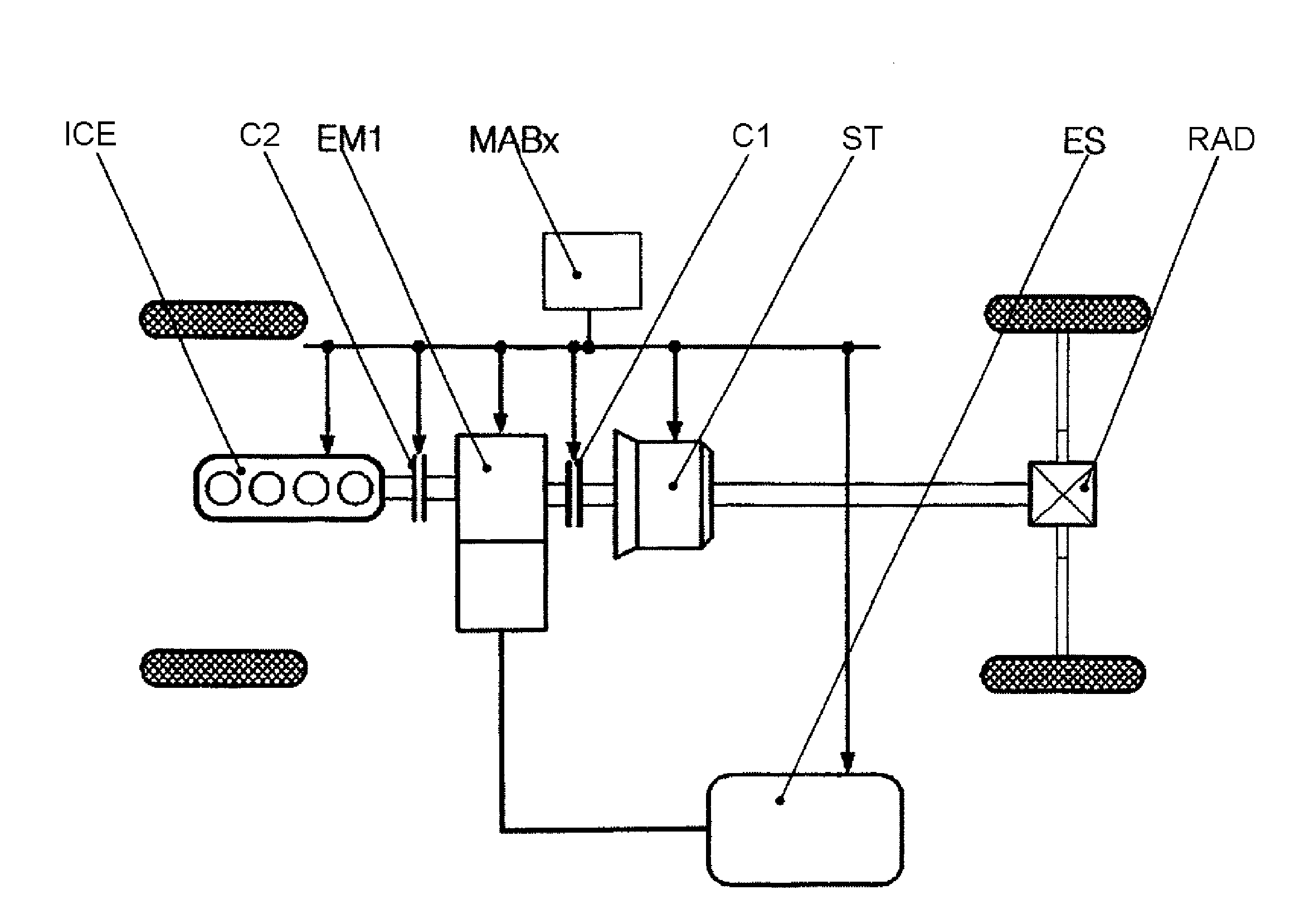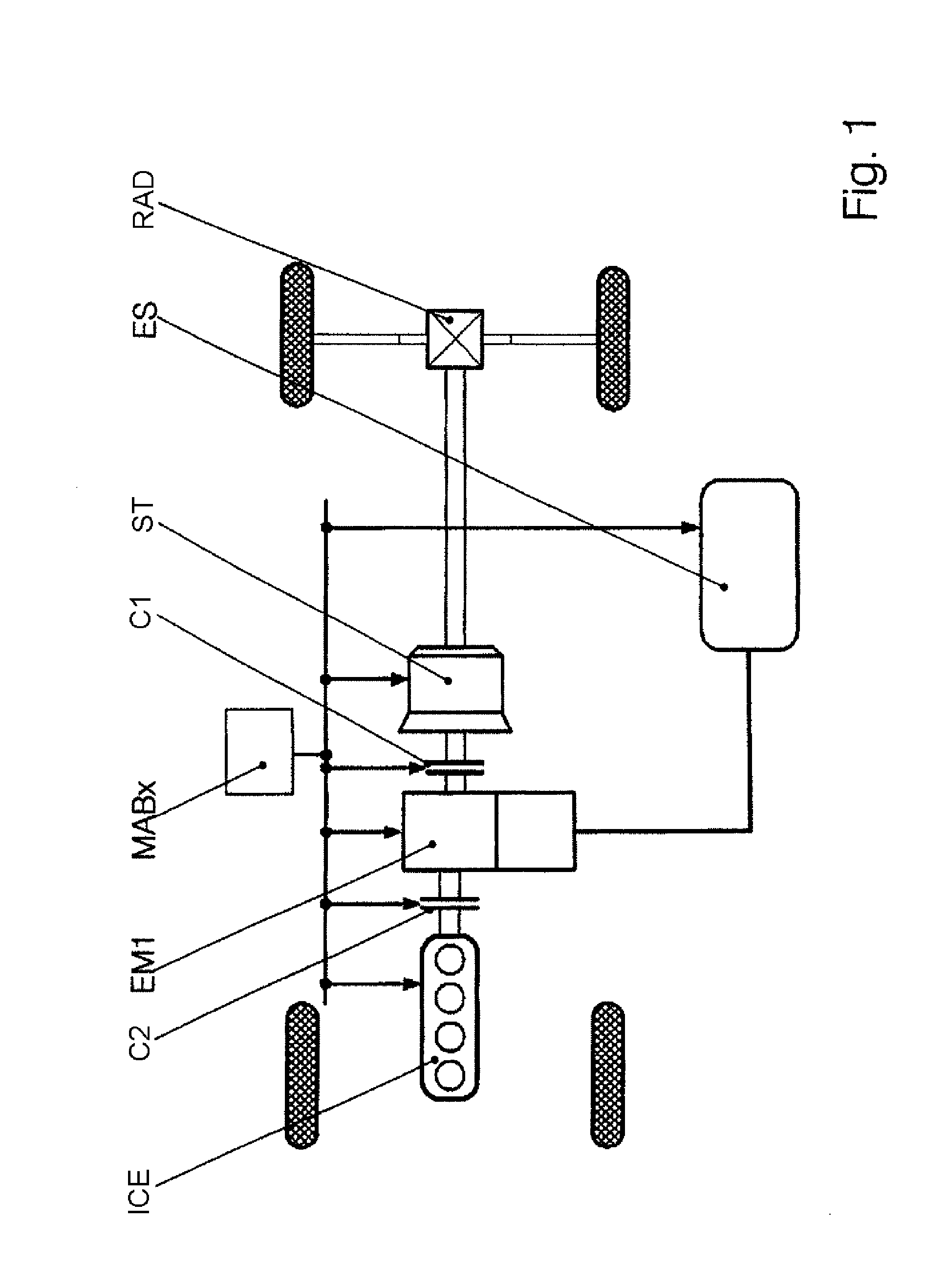Method for controlling the hybrid drive of a motor vehicle and control system
a hybrid drive and control system technology, applied in the direction of analogue computers, electric energy vehicles, internal combustion piston engines, etc., can solve the problems of not being able to achieve the adaptation to driving dynamics requirements with difficulty, and not being able to overcome branched logic with difficulty
- Summary
- Abstract
- Description
- Claims
- Application Information
AI Technical Summary
Benefits of technology
Problems solved by technology
Method used
Image
Examples
Embodiment Construction
[0051]A simple hybrid drive that can be controlled using the method according to the invention, as per FIG. 1, is composed of the following components: an internal combustion engine ICE, an electric machine EM1, a shift transmission ST or a transmission with a fixed step-down transmission ratio, a rear axle differential RAD and an energy store ES—a high-capacity high-voltage battery, referred to simply as a battery below, or the like, and also a first clutch C1 between the electric machine EM1 and the shift transmission ST, and a second clutch C2 between the internal combustion engine ICE and the electric machine EM1. A control unit (MABx) is connected to the components by means of lines that are not shown in detail in FIG. 1. The internal combustion engine ICE and the electric machine EM1 are summarized below under the term “machines”.
[0052]FIG. 2 shows a complex hybrid drive to which the exemplary embodiment described further below relates. Said hybrid drive is composed of the fol...
PUM
 Login to View More
Login to View More Abstract
Description
Claims
Application Information
 Login to View More
Login to View More - R&D
- Intellectual Property
- Life Sciences
- Materials
- Tech Scout
- Unparalleled Data Quality
- Higher Quality Content
- 60% Fewer Hallucinations
Browse by: Latest US Patents, China's latest patents, Technical Efficacy Thesaurus, Application Domain, Technology Topic, Popular Technical Reports.
© 2025 PatSnap. All rights reserved.Legal|Privacy policy|Modern Slavery Act Transparency Statement|Sitemap|About US| Contact US: help@patsnap.com



